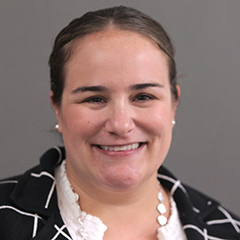This blog is part of our Medicaid Access and Managed Care Rules for HCBS series, which examines the implications of the new rules on home and community-based programs and provides states with suggestions to improve data, quality reporting, and oversight.
Today, the Centers for Medicare & Medicaid Services (CMS) published final rules for Ensuring Access to Medicaid Services (Access Rule) and Medicaid and Children’s Health Insurance Program (CHIP) Managed Care Access, Finance, and Quality (Managed Care Rule). These rules reflect the biggest regulatory changes to Medicaid and CHIP in nearly a decade.
The Access Rule will require greater standardization and new public reporting about the systems and processes through which more than 7 million Medicaid beneficiaries receive home and community-based services (HCBS) each year. The requirements include reporting CMS’s HCBS Quality Measure Set and metrics on person-centered planning, waiting lists, timely access to select services, grievances, critical incidents, and compensation for direct care workers. For the Managed Care Rule, which affects 77 million beneficiaries enrolled in Medicaid managed care, the changes include reporting on wait-time standards and payment rates; updates to standards for state-directed payments, in lieu of services, and medical loss ratios; and creation of public quality-rating systems.
State agencies will be the standard bearers translating these far-reaching rules into reality over the next several years, in partnership with consumers and their families, managed care organizations, providers, and other interested parties. States must also prepare for a sustained effort, as both rules have implementation dates that span from the effective date of July 9, 2024, to up to eight years in the future, in 2032.
In the face of such large-scale change, it can be difficult to know where, or when, to begin. On one hand, even if the implementation date is far down the road, states might need to take foundational steps sooner rather than later. On the other hand, CMS has indicated plans to issue subregulatory guidance for some requirements with deadlines further out, making them reasonable candidates to tackle later.
As leaders in Mathematica's HCBS Practice, we are advising our state clients to think about:
- Spring-cleaning state data on Medicaid HCBS enrollment, claims, and encounters. Valid, usable Medicaid enrollment, claims, and encounter data from state Medicaid Management Information Systems (MMIS) underpin much of the required Access Rule reporting. These are the main data sources for three mandatory HCBS Quality Measures (MLTSS/LTSS-6, -7, and -8),1 which the 38 states with active grants for Money Follows the Person demonstrations must report by 2026, and all states must report by 2028. The MMIS also provides a tool for identifying major populations served by a state’s HCBS programs and for generating samples needed for other HCBS Quality Measures and access metrics. The time to review the completeness and accuracy of these data—and correct any problems with them—is now.
- Finding those other (non-MMIS) data sources. The Access and Managed Care Rules will also require data sources that go beyond the data traditionally captured in a state MMIS. States will need information on Medicare-covered services to shed light on outcomes among dually eligible beneficiaries included in MLTSS/LTSS-6, -7, and -8. They will also want to draw information from case management records for HCBS Quality Measures MLTSS/LTSS-1, -2, and person-centered planning reporting; grievance and incident managements systems; waiver waiting lists; and payments to providers and direct care workers. In our experience working with states, these data sources often live in various places. States should start working now to find the owners of each source, assess any gaps, and lay the groundwork for contractor reporting and intra-agency coordination.
- Aligning HCBS quality management and monitoring across payment systems. The Access Rule focuses on section 1915(c) waivers, section 1915(i), (j) and (k) state plans, and HCBS provided under a section 1115 demonstration, whereas the Managed Care Rule covers HCBS provided through MLTSS plans. However, for efficient state-level management and monitoring of HCBS programs, now is the time to identify and consider alignment in shared areas. These areas include access to services (such as homemaker, home health aide, personal care, habilitation, outpatient mental health, and substance use disorder services), grievance systems, quality strategies, community engagement, and public transparency.
Over the next few weeks, we will publish detailed steps states should consider now to start bringing their HCBS programs into compliance with the Access and Managed Care Rules. These recommendations will be based on Mathematica’s decades of experience supporting Medicaid HCBS and managed care monitoring and quality improvement at the federal and state levels.
Jessica Ross, Patricia Rowan, and Jenna Libersky are principals at Mathematica and lead HCBS program monitoring and implementation projects for state and federal clients. Contact Mathematica’s HCBS Practice for more information.
Footnotes
1 MLTSS = managed long-term services and supports; LTSS = long-term services and supports.





